Dwarf World 2012 VP113 at Solar System's Edge: Photos and images
Discovery of New Inner Oort Cloud 2012 VP113

These images show the discovery of the new inner Oort cloud object 2012 VP113 taken about 2 hours apart on UT November 5, 2012. The motion of 2012 VP113 clearly stands out compared to the steady state background stars and galaxies. [Read the full story of dwarf planet 2012 VP113 here.]
Discovery Images of 2012 VP113
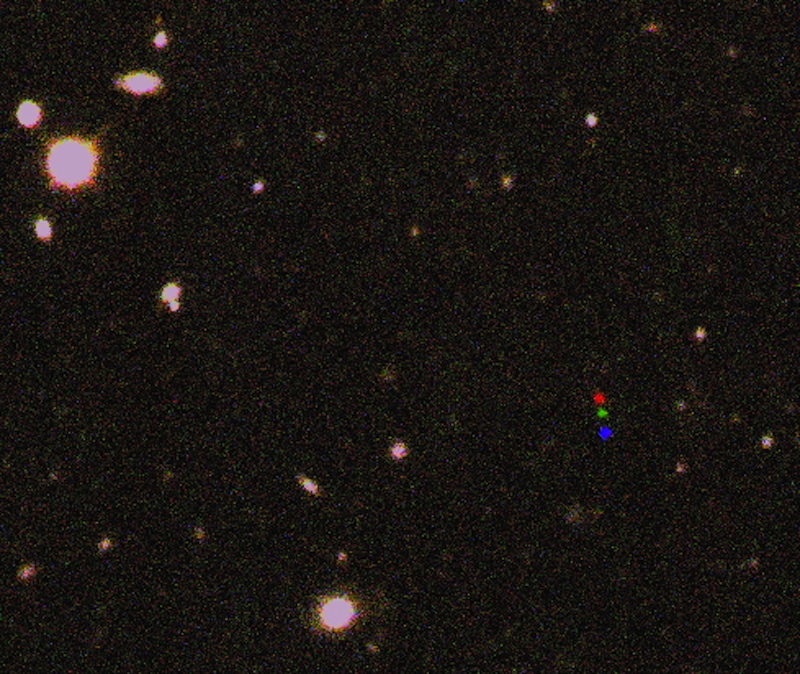
The discovery images of 2012 VP113, which has the most distant orbit known in our Solar System. Three images of the night sky, each taken about 2 hours apart, were combined into one. The first image was artificially colored red, second green and third blue. 2012 VP113 moved between each image as seen by the red, green and blue dots. The background stars and galaxies did not move and thus their red, green and blue images combine to show up as white sources. [Read the full story of dwarf planet 2012 VP113 here.]
Trans-Neptuinan Objects, Deep-Frozen in the Outer Solar System (Infographic)
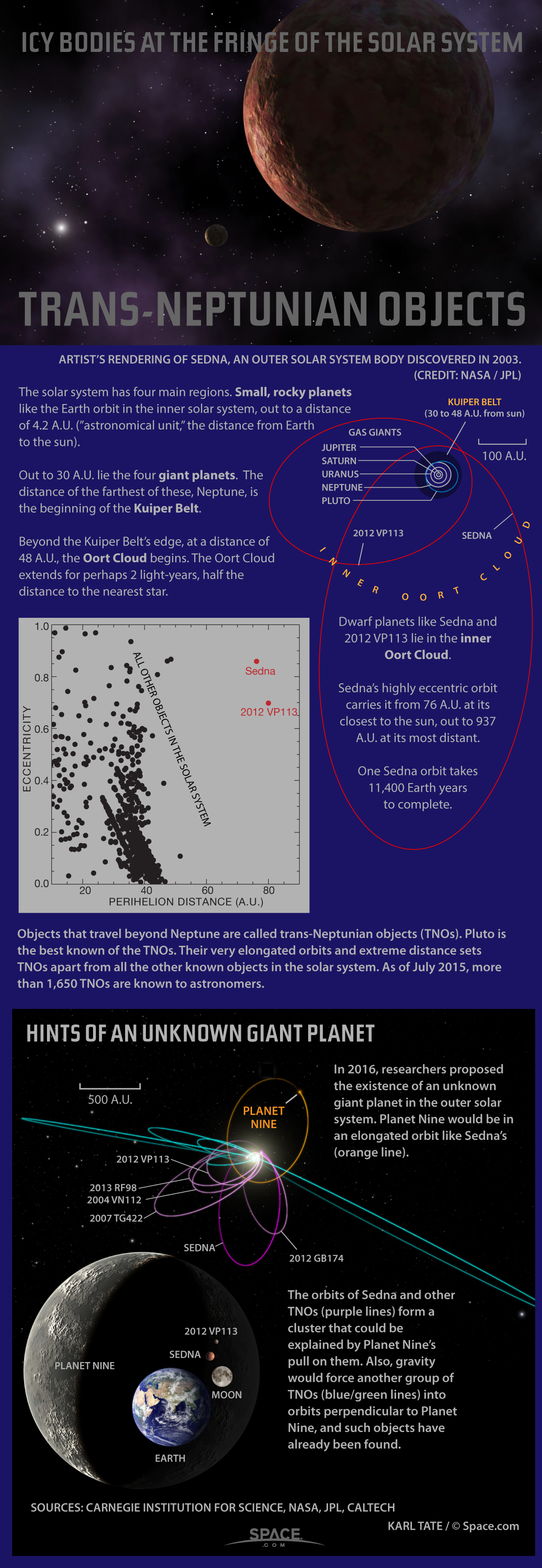
Astronomers are discovering trans-Neptunian objects belonging to the Oort Cloud, the most distant region of Earth's solar system. See how the dwarf planets of Sedna and 2012 VP113 stack up in this Space.com infographic.
[Read the full story of dwarf planet 2012 VP113 here.]
Orbit Diagram for Outer Solar System
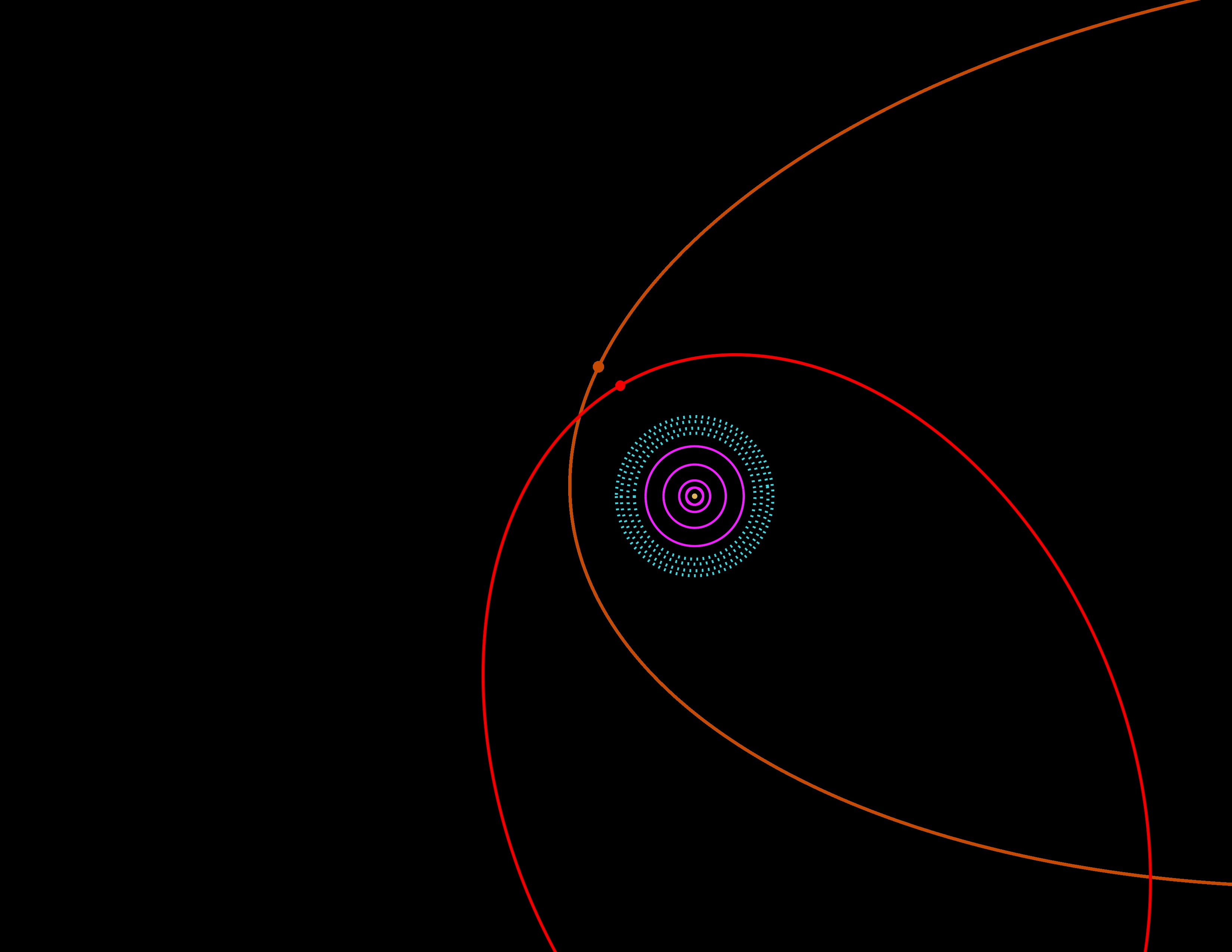
Orbit diagram for the outer solar system. The sun and terrestrial planets are at the center. The orbits of the four giant planet Jupiter, Saturn, Uranus and Neptune are shown by purple solid circles. The Kuiper Belt (including Pluto) is shown by the dotted light blue region just beyond the giant planets. Sedna's orbit is shown in orange while 2012 VP113's orbit is shown in red. Both objects are currently near their closest approach to the sun. They would be too faint to detect when in the outer parts of their orbits. [Read the full story of dwarf planet 2012 VP113 here.]
Outer Solar System Objects' Orbits
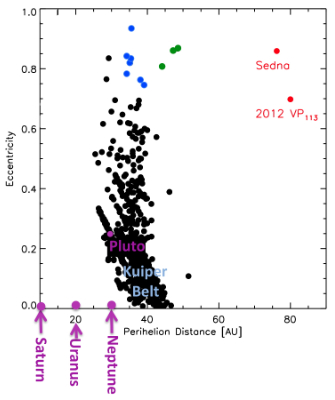
[Read the full story of dwarf planet 2012 VP113 here.]
Sedna, a Distant Dwarf World

Artist's conception of Sedna, which is so far away it takes 10,000 Earth-years to orbit the sun. All that is known about Sedna's appearance is that it has a reddish hue. In the distance is a hypothetical small moon, which scientists believe may be orbiting this distant body. NASA/JPL-Caltech/R. Hurt (SSC). Another dwarf planet, 2012 VP113 may be even farther out. [Read the full story of dwarf planet 2012 VP113 here.]
Dwarf Planets in Our Solar System (Infographic)
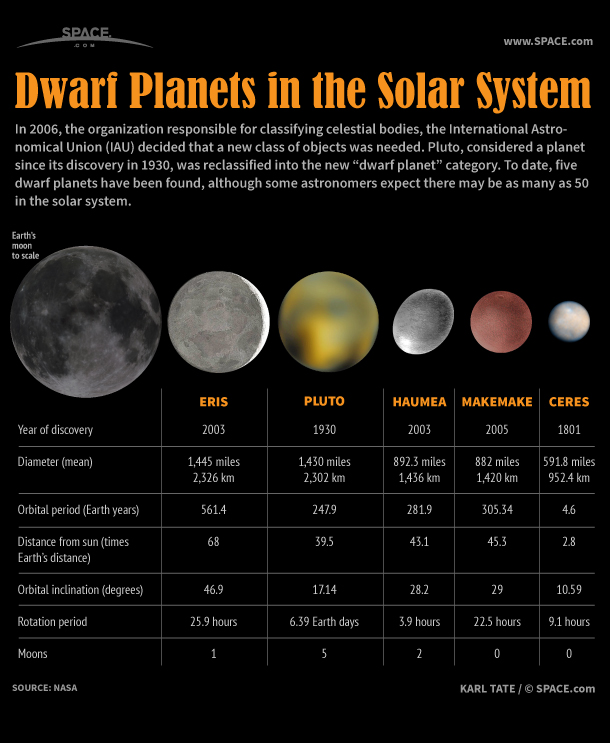
Meet the dwarf planets of our solar system, Pluto Eris, Haumea, Makemake and Ceres.
Get the Space.com Newsletter
Breaking space news, the latest updates on rocket launches, skywatching events and more!
Join our Space Forums to keep talking space on the latest missions, night sky and more! And if you have a news tip, correction or comment, let us know at: community@space.com.

Space.com is the premier source of space exploration, innovation and astronomy news, chronicling (and celebrating) humanity's ongoing expansion across the final frontier. Originally founded in 1999, Space.com is, and always has been, the passion of writers and editors who are space fans and also trained journalists. Our current news team consists of Editor-in-Chief Tariq Malik; Editor Hanneke Weitering, Senior Space Writer Mike Wall; Senior Writer Meghan Bartels; Senior Writer Chelsea Gohd, Senior Writer Tereza Pultarova and Staff Writer Alexander Cox, focusing on e-commerce. Senior Producer Steve Spaleta oversees our space videos, with Diana Whitcroft as our Social Media Editor.









